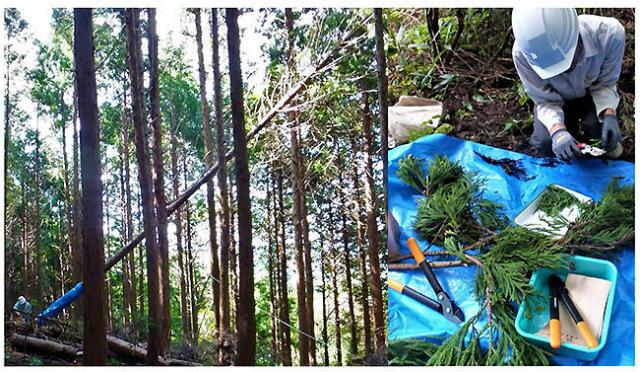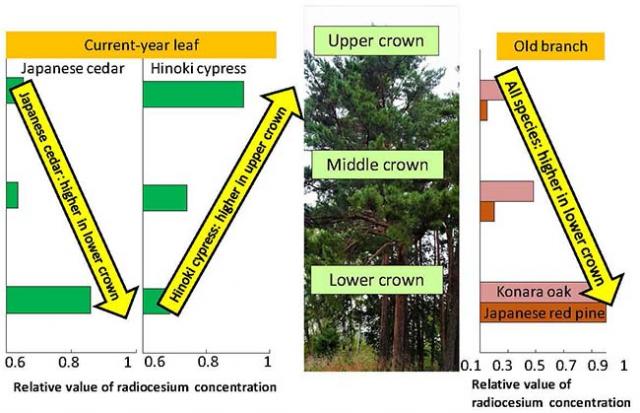Home > Research > Research Results > Research Results 2020 > Radiocesium concentration depends on the height of branches and leaves in a canopy
Update:November 27, 2020
Main content starts here.
Radiocesium concentration depends on the height of branches and leaves in a canopy
| Article title |
Vertical distribution of radiocesium concentrations among crown positions and year-to-year variation in four major tree species after the Fukushima Daiichi Nuclear Power Plant accident |
|---|---|
| Author (affiliation) |
Tanaka Kenzo (a), Satoshi Saito (b), Masatake Araki (a), Takuya Kajimoto (c) (a) Department of Plant Ecology, FFPRI, Tsukuba, Ibaraki, Japan. (b) Kansai Research Center, FFPRI, Kyoto, Japan. (c) Tohoku Research Center, FFPRI, Morioka, Iwate, Japan. |
| Publication Journal |
Journal of Environmental Radioactivity, Elsevier, Oct.2020 DOI:10.1016/j.jenvrad.2020.106447( External link ) |
| Content introduction |
The radiocesium (mainly 137Cs) that was released into the atmosphere by the Fukushima Daiichi nuclear power plant accident adhered to leaves and branches of trees, after which it gradually moved into the litter and soil layer through litter fall. Some of the radiocesium that moved into the soil is being reabsorbed into the leaves and branches of trees. In order to understand the movement of radiocesium in a forest, it is important to understand the relationship between radiocesium concentrations, and age and/or height of branches and leaves within tree canopy. Therefore, leaves and branches were collected from the upper, middle, and lower parts of canopies of four tree species (Cryptomeria japonica, Chamaecyparis obtusa, Pinus densiflora and Quercus serrata) to investigate the concentrations of radiocesium for up to 8 years after the accident. Newly developed branches and leaves (current-year branches and leaves) show different patterns of changes in concentrations depending on their species and position in the canopy. For example, in current-year leaves, they tend to be high in lower canopies of C. japonica, but it is the opposite for C. obtusa, which have high concentrations in upper canopies. However, no positional differences were seen in P. densiflora and Q. serrata. These differences among species may be related to interspecific nutrient distribution and the lifetime of leaves in the canopy. In addition, in old branches and leaves, concentrations are higher in lower canopies than in upper canopies, regardless of the species, and this trend has not changed with the passing of time since the accident. This may because the tops of canopies are bright and there is good growth, so there has been active turnover of branches and leaves that were directly contaminated by the accident, resulting in a decrease in radiocesium concentrations. Those findings about the distribution of radiocesium concentrations in branches and leaves within canopies will be useful for understanding the movement of radiocesium in a forest and for predicting future concentrations.
After a tree was cut, leaves and branches were collected from each height level of the canopy, current-year leaves and branches were separated from the old ones, and concentrations of radiocesium were measured.
Figure:Distribution of radiocesium concentrations in current-year leaves and old branches by their position in the canopy. There were differences among species in the distribution patterns of radiocesium concentrations in current-year leaves, with C. japonica showing higher concentrations in lower canopies, and C. obtusa showing higher concentrations in upper canopies (Left: C. japonica and C. obtusa). However, old branches containing tissues that were at least one year old showed higher concentrations in lower canopies, regardless of the species (Right: P. densiflora and Q. serrata). |
Copyright © Forest Research and Management Organization. All rights reserved.


